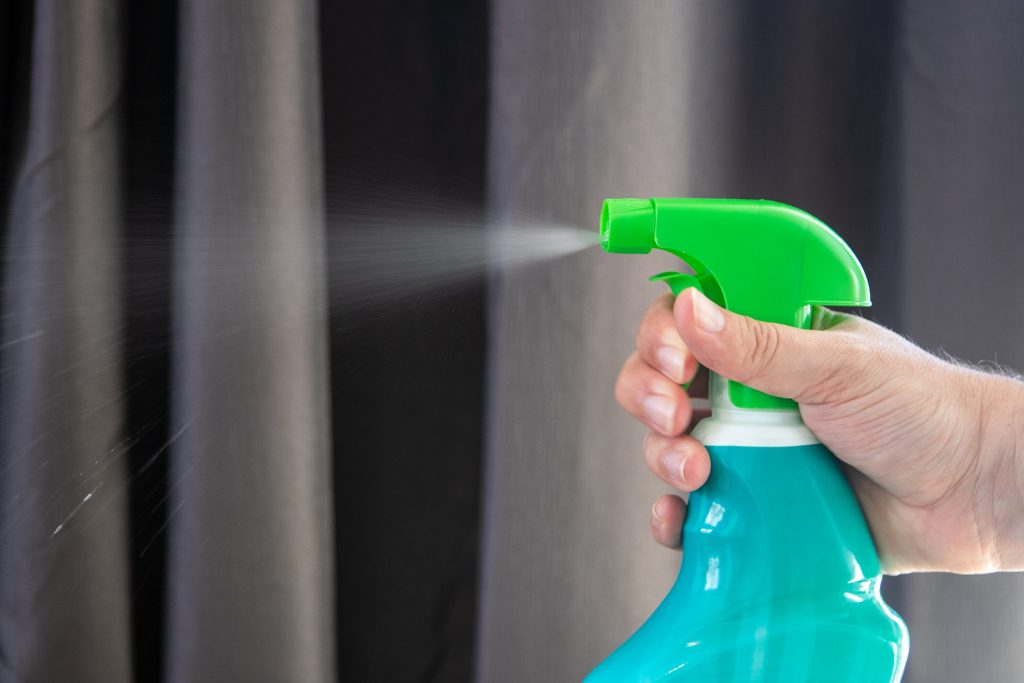Written by Sowmya Kolluru and Edited by Alexander Alva

According to the World Health Organization, 3.8 million individuals die as a result of indoor air pollutants, which can result in a myriad of health implications. [1]. Alarmingly, household air pollution (HAP) comes in many forms and from many sources, from poor ventilation systems to pesticide usage in gardening endeavors. Given that many indoor air pollutants are not readily obvious, it is vital to compile the origins, effects, and current research relating to household air pollution into a comprehensive study.
HAP arises from particles, chemicals, or substances dispersed in the air of the home. Numerous causes of household air pollution include asbestos—a chemical used in many building materials—pesticides, smoke, cleaning supplies, and certain cooking fuels and stoves. Another indoor air pollutant (IAP) is lead, which can be found in paints, food, water, and dishware. According to the Environmental Protection Agency, many other practices magnify IAP levels. Improper ventilation of the home prevents the recycling of air between the inside household air and outdoor air. Such vital exchange ensures that no particles get too concentrated. Buildup of HAP due to improper ventilation, therefore, threatens the health and safety of the home’s inhabitants [2].
Only more recently has the gravity of household air pollutants been understood. According to the Chest Research Foundation in India, about 34% of individuals who died from exposure to indoor air pollutants had suffered from a stroke. Moreover, of those, 12% had developed pneumonia, 6% had developed lung cancer, 26% had developed coronary heart disease, and 22% had developed chronic obstructive pulmonary disease. One major effect of HAP cited by the study was diminished fertility and harm to pregnant women that subsequently affected the unborn child. The child may develop increased blood pressure, low weights and short heights, or retardation, and even an increased likelihood of infant mortality [3]. Recent evidence also connects HAP to tuberculosis. In countries highly affected by tuberculosis, 26.2% of cases were highly associated with high HAP. In addition, HAP increases the risk of asthma, various respiratory conditions, cancer, and heart and eye diseases [4]. These are just some of the many adverse effects HAP can have.
A study published by the International Journal of Environmental Research and Public Health in 2020 details the effects of various indoor pollutants, including carbon monoxide (CO). CO can circulate into the home from outdoor air and can be released by gas heaters, certain cooking fuels, appliances, and fireplaces. According to Kidde, a company that manufactures alarms to detect CO, among other devices, a CO concentration below 50 parts per million (ppm) is considered low exposure. However, a concentration above this value starts leading to symptoms of carbon monoxide poisoning [5]. In homes with appliances like gas stoves, CO concentrations may climb up to 30 ppm, but even at these low levels, CO can be very dangerous, triggering a wide array of effects from cognitive issues to slow poisoning [6]. CO is especially dangerous because it is invisible, odorless, and tasteless [7].
Given the adverse effects of these pollutants, developing strategies to protect against them is crucial. One strategy involves identifying IAP sources. This includes checking the house’s structural foundation and appliances used and reviewing personal hobbies to determine pollutant expenditures. For instance, radon is a major indoor pollutant whose concentrations can readily be measured and addressed by homeowners. Measuring devices are commercially available and ready to use; calculated levels can be compared against the EPA guidelines to assess the safety of the home’s radon levels. Finally, check the household’s ventilation system and increase interior to exterior air circulation [8]. It is important to review the appliances and activities of the household, as many of these are key contributors to HAP. There are numerous sources of HAP, and increased exposure to these pollutants can have chronic effects. With HAP being a root cause of many health conditions people around the world face, it is vital that more research be done to develop strict methods for measuring and equipping all individuals to combat this issue.
References:
- “Household air pollution and health.” World Health Organization, 2018, Accessed 14 Feb. 2021. www.who.int/news-room/fact-sheets/detail/household-air-pollution-and-health.
- “Introduction to Indoor Air Quality.” United States Environmental Protection Agency. Accessed 14 Feb. 2021. www.epa.gov/indoor-air-quality-iaq/introduction-indoor-air-quality#causes.
- Apte, K., Salvi, S. (2016). Household air pollution and its effects on health. F1000 Research, 5: 2593.
- Ahmed, F., Hossain, S., Hossain, S., Fakhruddin, A.N.M., Abdullah, A.T.M., Chowdhury, M.A.Z., Gan, S.H. (2019). Impact of household air pollution on human health: source identification and systematic management approach. SN Applied Sciences, 1: 418.
- “What Are the Carbon Monoxide Levels That Will Sound the Alarm?” Kidde Fire Safety. Accessed 10 March 2021. https://www.kidde.com/home-safety/en/us/support/help-center/browse-articles/articles/what_are_the_carbon_monoxide_levels_that_will_sound_the_alarm_.html#:~:text=Low%20level%3A%2050%20PPM%20and,if%20someone%20is%20experiencing%20symptoms.
- Tran, V.V., Park, D., Lee, Y. (2020). Indoor Air Pollution, Related Human Diseases, and Recent Trends in the Control and Improvement of Indoor Air Quality. International Journal of Environmental Research and Public Health, 17:2927.
- “Fact Sheet: Carbon Monoxide in the Home.” Mississippi Department of Health, 2004, Accessed 10 March. 2021. https://msdh.ms.gov/msdhsite/_static/43,1720,230,330.html#:~:text=Carbon%20monoxide%20is%20an%20invisible,illness%20and%20death%20by%20suffocation.
- “The Inside Story: A Guide to Indoor Air Quality.” United States Environmental Protection Agency. Accessed 14 Feb. 2021. https://www.epa.gov/indoor-air-quality-iaq/inside-story-guide-indoor-air-quality#tab-2.
